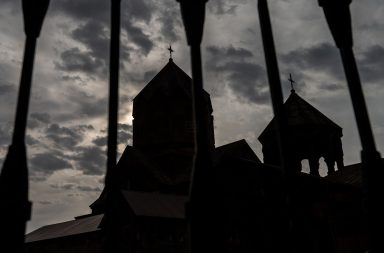Massive wildfires continue to rage across the eastern regions of occupied Artsakh, devastating forests, grazing lands, and historic Armenian villages in the Akna and Martakert areas. What began as a localized blaze has now spread uncontrollably. The situation is worsened by hidden landmines left over from years of war, which are now detonating in the flames—further endangering lives, wildlife, and the environment.
Among the most endangered sites are the Tigranakert Historical and Cultural Reserve and the Amaras Monastic Complex, both of which hold profound historical and spiritual significance for the Armenian people. According to the Ministry of Culture of Artsakh, the fires have encroached upon protected heritage zones, placing nearly 100 cultural and historical monuments at immediate risk.

Map of forest fires in occupied Artsakh
Artsakh has been under Azerbaijani occupation since September 2023, following a large-scale military offensive that resulted in the forced displacement of the native Armenian population and the dissolution of the Artsakh Republic. In the absence of local governance and with severely limited resources on the ground, efforts to contain the fires and assess the full extent of the damage remain minimal.
While Azerbaijani media portrays the disaster as a routine forest fire, the reality is far more alarming. This is not merely an environmental emergency—it is a crisis unfolding on occupied Armenian lands, threatening the destruction of centuries-old communities, sacred sites, and irreplaceable natural landscapes.
The Ministry of Culture has called on international heritage and environmental organizations to take urgent action to prevent the irreversible loss of Armenian cultural legacy and to hold those responsible for its endangerment accountable.


